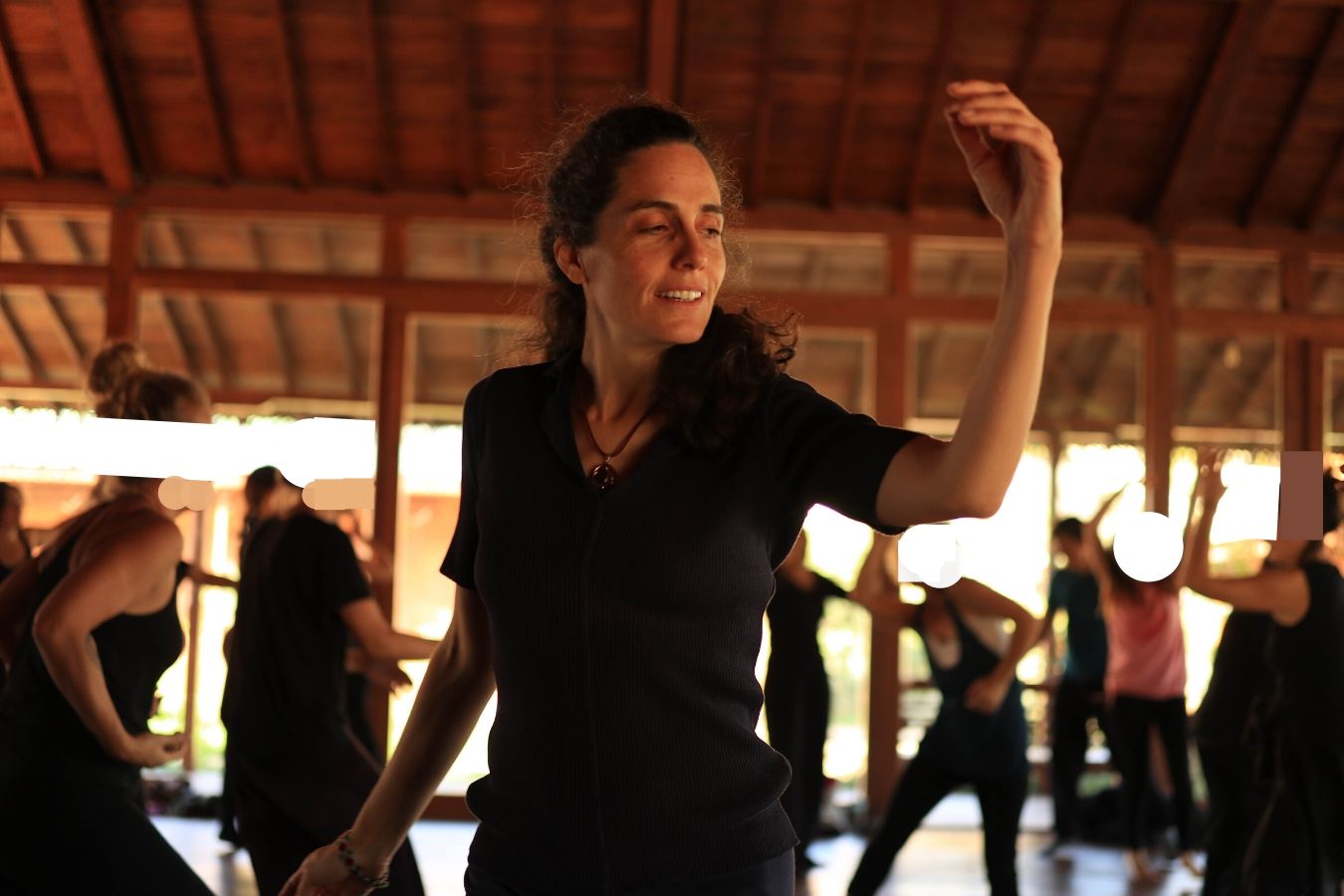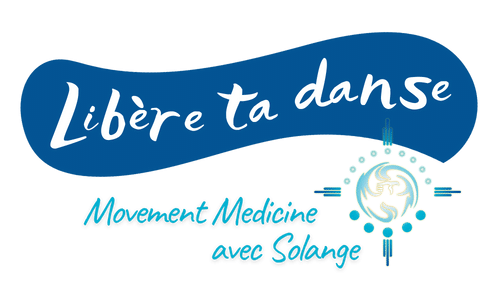Why do I dance?
January, 2020Dance as a tool for personal development
This month, I've decided to share with you what conscious dance and conscious dance spaces mean to me.
My passion for dance
Why do I dance? I've always loved dancing. When I was younger, it allowed me to satisfy my need for control. Especially over my body: knees out, stomach in, buttocks in, shoulders down, chin up, no tension in the fingers and... breathe. The search for the perfect movement, the resistance to the greatest stress, quenched my thirst for perfection. I also liked to imagine being someone else: for a few minutes in movie star mode. At parties, I also danced a lot to escape conversations: words just wouldn't come.
Discovering conscious dance was a revelation. Thanks to movement, I can let my body expresswhat words cannot. For the first time, there's a place, a time, where I can safely, simply and authentically put down my mask. Or rather, workshop after workshop, to put on my masks. It's an exploration, I can make mistakes, and start again as many times as I like.
In a free movement workshop, everyone discovers their own body at their own pace. Simply by exploring all the different ways of moving each part of the body. You don't need to have danced before to have an infinite number of movement possibilities. What's beautiful here is not the dance technique, the fluid, perfect movement, but the authenticity and profound uniqueness of each individual's movement. What we're looking for here is true movement, movement that comes fromwithin.
How does it work?
In general, it's my head that gives my body an idea, based on the intention, theme or question posed by the teacher. My body then mimes the idea, giving it form and movement. From there, the possibilities are multiple: another idea, immobility (like a statue), repetition, inspiration by music, interaction with other dancers, imagination or simply the desire to explore what this body (or this part of the body) can do differently.
For the moment, it's still my brain that's in charge, but what I'm looking for is that moment (of grace) whenmovement takes over. When, for example, my left arm wants to rise up and pull me backwards. It's this arm that leads the dance, my whole body engages in its movement and follows its dance. My head notes, observes, but no longer decides. I remain aware of the thoughts running through my head.
My mind is present. This trance is not an escape from reality. I'm not trying to lose consciousness to relieve myself of the harshness of the world. On the contrary, I'm trying to rekindle what I couldn't express and which I carry within me. To become aware of it so as to stop running away from it and fighting against it, but to deal with it.
Dancing your emotions
On the dance floor, in the subdued light, hidden by the group, I dance my emotions: my fears, my anger and my sadness. I experience what it's like to allow myself to feel them fully and completely. I'm peeling away the layers of armour I've built up over the years. And little by little, joy,wonder at the simple beauty of nature or of an exchange, and gratitude have returned to my life. Freed from my burdens, I'm more available to others: more attuned, the connections are more authentic, deeper.
By exploring my body, I discover its infinite possibilities, its uniqueness and its limits. Through my body, I get to know myself. I can also recognize my infinite possibilities, my uniqueness and accept my limits in order to deal with them.
Everyone can discover themselves through their bodies.

Upcoming workshops
Want to give it a try? Find out about upcoming workshops and courses below.
No results
The requested page cannot be found. Try refining your search or use the navigation panel above to locate the item.
Where to practice?
Several formats are available to suit your location, your schedule and your objectives: well-being and relaxation or personal development.
Discover our other options: weekly courses in Aix-en-Provence, one-off workshops, individual courses and corporate applications.

Good..day!
I'd really like to take part in this experience at conscious dance..please let me know if you're coming to Cannes 06..after the Covid.. I/we are waiting for you...?
Terez
Hello Terez, Thank you for your interest. I'd be delighted to use your e-mail address (.sfr) to let you know if I have the opportunity to come again?
By the way, I also know people who offer conscious dance workshops near Cannes. I don't think they've taken up outdoor work again, but I can pass on their contact details if they do. Solange